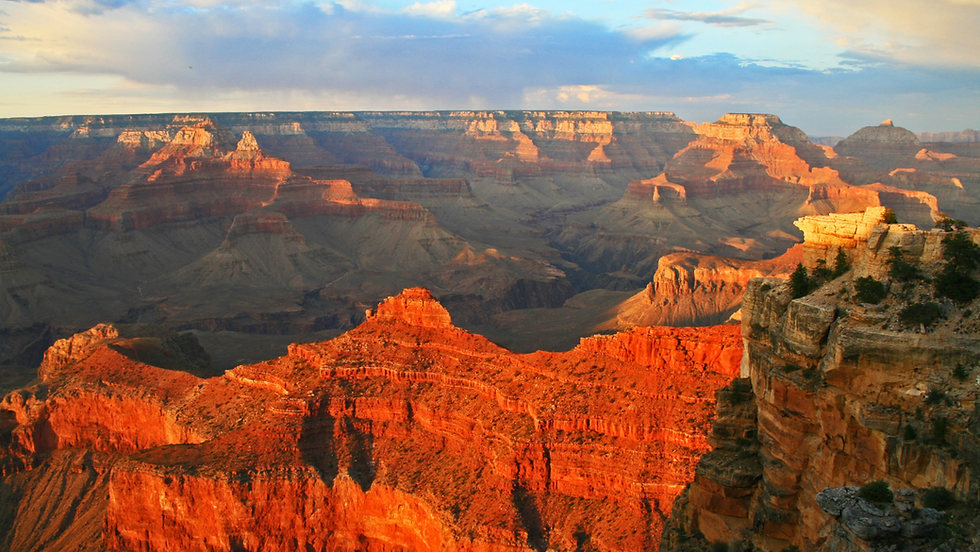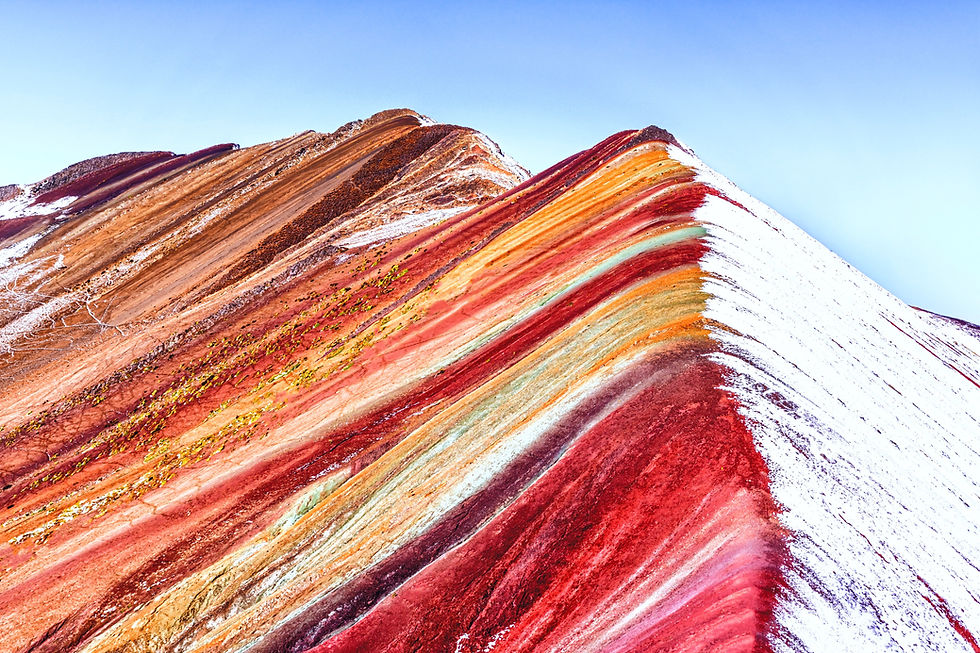Five (5) Must-See U.S. National Monuments
- Kahera Luxury
- Jul 11, 2023
- 4 min read

U.S. National Monuments are protected areas that have been designated by the U.S. government to preserve significant natural, cultural, or historical features. These encompass a wide range of sites, including natural landscapes, historical landmarks, archaeological sites, and cultural heritage sites. They are managed by various federal agencies, such as the National Park Service, the Bureau of Land Management, or the U.S. Forest Service.
National Monuments offer visitors the opportunity to explore and appreciate the unique qualities of each site. They often provide educational resources, interpretive programs, and recreational activities for the public to engage with the natural and cultural heritage of the United States. While some National Monuments may have visitor centers, facilities, and developed trails, others may have more limited infrastructure, allowing visitors to experience a more rugged and untouched environment.
Here are five must-see U.S. National Monuments you should visit:
Grand Canyon National Park:

The Grand Canyon is estimated to be around 5 to 6 million years old! Known to be one of the world's most breathtaking natural wonders, the Grand Canyon in Arizona is a mile-deep gorge carved by the Colorado River over millions of years. The Grand Canyon is home to a wide variety of plant and animal species. It supports numerous ecosystems, ranging from desert scrublands at the bottom to conifer forests at higher elevations. The park is home to over 90 mammal species, 50 reptiles, and amphibian species, and more than 300 bird species. Its colorful rock formations and vastness make it a must-see destination for nature enthusiasts. It is one of the most visited national parks in the United States, attracting millions of visitors each year. It offers a range of activities, including hiking, camping, scenic drives, and rafting, allowing visitors to experience the grandeur of this natural wonder.
Mount Rushmore National Memorial:

Situated in the Black Hills of South Dakota, Mount Rushmore features the iconic faces of four U.S. presidents: George Washington, Thomas Jefferson, Abraham Lincoln, and Theodore Roosevelt. Mount Rushmore was sculpted by Gutzon Borglum and his son Lincoln Borglum. Gutzon Borglum began the project in 1927 and oversaw its progress until his death in 1941. His son Lincoln completed the remaining work. The sculpting process involved drilling holes into the granite and then using dynamite to remove excess rock. The intricate details were sculpted using jackhammers and hand chisels. The entire process took around 14 years to complete. The sculpture represents important aspects of American history and national identity. Mount Rushmore has a visitor center that offers exhibits, interactive displays, and a museum, providing visitors with information about the monument's history, construction, and the lives of the presidents depicted.
Lincoln Memorial:

The design of the Lincoln Memorial is heavily influenced by classical Greek architecture. It resembles a Greek temple, with Doric columns and a large pediment. Situated on the National Mall in Washington, D.C., the Lincoln Memorial is a tribute to President Abraham Lincoln. The seated statue of Abraham Lincoln inside the memorial is 19 feet (5.8 meters) tall. It was carved from 28 blocks of white Georgia marble and weighs approximately 175 tons. This massive statue of Lincoln and the surrounding memorial serve as a symbol of unity, freedom, and the fight against slavery. The Lincoln Memorial is illuminated at night, creating a stunning view and allowing visitors to appreciate its grandeur even after sunset. The lighting enhances the memorial's presence and makes it a striking sight from the surrounding area.
Bandelier National Monument:

Located in New Mexico, Bandelier is home to ancient Native American cliff dwellings and archaeological sites. Bandelier National Monument preserves the remnants of ancient Puebloan settlements that date back over 10,000 years. It is also home to diverse wildlife, including mule deer, elk, black bears, and various bird species. The monument also features beautiful landscapes of canyons, mesas, and forests, making it a haven for nature enthusiasts. Visitors can explore these ancestral Puebloan ruins, hike through scenic canyons, and learn about the area's rich history and cultural significance. Bandelier also offers special night sky programs where visitors can stargaze and learn about the cultural and scientific significance of the night sky. The monument's relatively remote location provides an opportunity for clear views of the stars.
Devils Tower National Monument:

Situated in northeastern Wyoming, Devil's Tower is a striking geological feature. It's a massive igneous rock formation that rises dramatically from the surrounding landscape, attracting climbers and nature enthusiasts alike. Devil's Tower holds great cultural and spiritual significance for several Native American tribes, including the Lakota, Cheyenne, Arapaho, and Kiowa. Many tribes have legends and stories associated with the formation, and it continues to be a sacred site and a place of prayer and ceremony. Devil's Tower gained additional recognition through its prominent appearance in the 1977 film "Close Encounters of the Third Kind," directed by Steven Spielberg. The tower served as a focal point in the movie's climactic scenes, contributing to its cultural significance. This is a popular destination for rock climbers from around the world. The tower offers a variety of climbing routes for both experienced climbers and beginners. Climbing permits are required, and climbers must respect any voluntary closures to protect nesting birds.



Comments